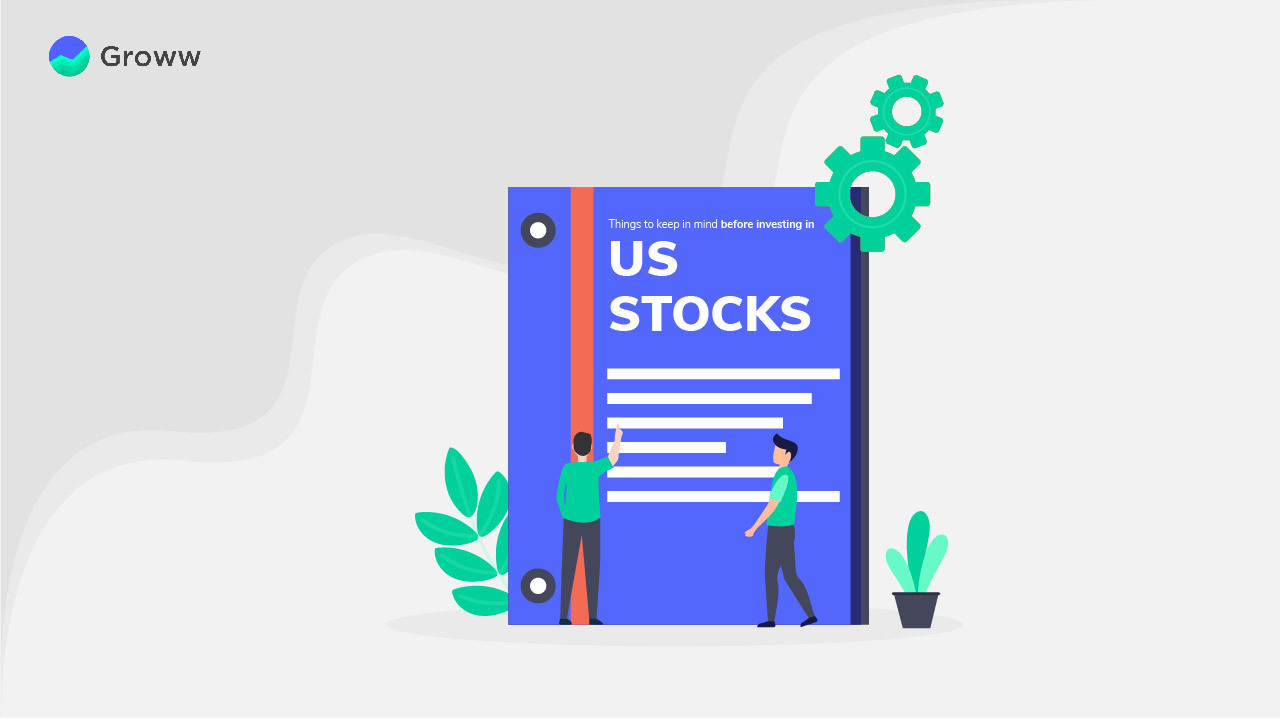5 Things to Keep in Mind Before Investing in US Stocks

When it comes to diversifying across geographies, US markets have been one of the top choices. US Markets have been home to some of the greatest technology and potential wealth-creating businesses. The fact that there is a low correlation between the US and Indian equity markets further increases its appeal from a diversification perspective.
However, before making any investment decision, it makes sense to know about the market, its functioning and overall set up, especially when the investor is sitting in India. If you are in the same boat, contemplating whether to invest in US equities or not, here are some important facts to know before you take the plunge. Read on!
1. Regulatory Framework
The US stock market is one of the oldest, most efficient, transparent and well – regulated markets in the world. Some of the biggest companies by market capitalisation, revenue and profits are listed on US Stock exchanges. An important aspect of US markets is the global exposure and flavour they provide as many of these listed corporations have a major global presence, scale and operational setup.
The Securities and Exchange Commission (SEC), established in 1934 is the regulatory agency which oversees the functioning of US stock markets. It ensures strict enforcement of laws and regulations which set the highest standards of transparency and integrity – a must for stock markets and for investor protection and confidence.
Companies | Type | Bidding Dates | |
| Regular | Closes 25 Apr | ||
| Regular | - | ||
| Regular | - | ||
| Regular | - | ||
| Regular | - |
2. Foreign Exchange Consideration
While investing in US stocks, a very important factor to be kept under consideration is the fluctuation between currencies of the two countries. This is because any gain (or loss) for an Indian investor will be subject to conversion, as per the applicable exchange rate in the Indian rupee before such return (or loss) is realised. The gains (or losses) will also move in tandem as per the currency movement.
For an investor from India, it is important to note that the exchange rate can be volatile and is impacted by a multitude of economic and political factors as well as factors related to demand and supply.
The Indian rupee has seen a steady decline against the US dollar over the last couple of years.
3.Taxes
India and the US have a Double Tax Avoidance Agreement (DTAA) which means the same income cannot be taxed twice. Like in India, the period for which the investment is held plays an important role in the case of US stock investments. The income or returns from US stocks is also categorized as Long Term Capital Gains (LTCG) or Short Term Capital Gains (STCG).
LTCG tax here would be applicable when the US stocks are held for more than two years (24 months). Stocks sold before this threshold of 24 months will be categorised as STCG and will be taxed as per the investor’s income tax slab.
Dividends received by the investors for their stock investments are taxed at a rate of 25% in the US (deducted before distributing the dividend). However, due to the DTAA, this income can be used to ‘offset’ the income tax payable in India. (The 25% tax deducted in the US is available to the investor as ‘Foreign Tax Credit’ in India)
4.Charges
Direct investing in the US stock markets involves a certain cost as all investments will first need to be converted into US dollars. Initially, at the time of account set up, funds need to be ‘remitted’ or transferred to the foreign brokerage for ‘funding’ the account. There will be a currency transfer charge at this level. Post this, there will be charges related to account maintenance and transactions (platform-specific).
The transaction charge can be a flexible percentage of the total traded amount or volume or a fixed dollar amount depending on the client relationship.
Trading frequently will attract more charges due to multiple transactions and multiple fund transfers (in and out). It will also involve multiple remittances as well as currency conversion charges.
In addition to these charges, there can be bank account related costs as well. It is always better to read the ‘fine print’.
5. Fund Limit
While making investments in US stocks from India, a maximum of $ 250000 per year per investor is permissible under the Reserve Bank of India’s Liberalised Remittance Scheme (LRS). The limit includes any amount remitted outside India towards education, travel, purchases or other overseas transactions during the year. Before investing in US stocks, the investor’s brokerage account needs to be funded. Investors are required to submit Form A – 2, available with RBI authorised dealers.
Any amount over and beyond the limit of $250000 would need RBI’s permission.
Conclusion
In portfolio construction, spreading of risk and balance can be achieved by investing across geographies and economies. Digital technology and ease of regulatory framework have smoothened the process of investing across physical boundaries. Investing in the US markets which were a dream for the retail investor just a few years back is a reality now.
With changing times, the portfolio mix also needs to evolve and change, if and when needed. Our market, although reasonably robust, is still small in comparison with the US market (In GDP terms alone, the US is 10 times bigger than India).
Thus, investing in US companies and stocks can potentially provide investors with global exposure, heft and a chance of better wealth creation. However, like any other investment product, make sure you acquaint yourself with the way the US economy functions, the factors that affect it and other forces at play. Conduct the necessary due diligence before investing.
Hope this was helpful!
Happy Investing